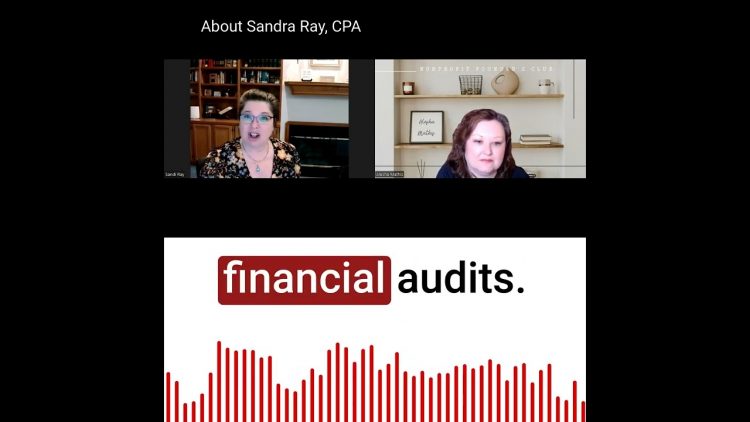The financial health and transparency of a nonprofit organization is paramount, not only for the leadership and beneficiaries but also for donors, sponsors, and the public. A nonprofit audit is an essential method for maintaining transparency and accountability. This article provides a comprehensive understanding of nonprofit audits and a handy checklist to guide organizations. A key component of nonprofit reporting is the Form 990, required annually by the IRS for tax-exempt organizations in the United States. This form provides detailed information about the nonprofit’s finances, governance, and programs, serving as a public document that enhances transparency.
How to Choose an Auditor?
- We also have 6 former nonprofit auditors on staff, so our team is trained to prepare your financial reports precisely how an auditor wants to see them.
- A nonprofit financial audit by the IRS is initiated if a return appears to be wanting in accuracy or completeness, unsupported by the organization’s financial records.
- Whether your organization is preparing for its first audit or conducting regular audits, this nonprofit audit checklist will help you stay on track.
- For instance, separating documents by fiscal year or by type of expense can streamline the review process.
- As a nonprofit, your relationship with donors and government entities is vital, and has to be built on trust.
- The audit firm will do preliminary testing, familiarize yourself with your organization and ask for additional documentation.
- Internal audits are conducted by the organization’s own staff and are used to assess the organization’s internal controls and procedures.
Your auditing committee should include at least one or more financial experts with knowledge of GAAP principles and financial reporting requirements. In this article, we’ll discuss different types of audits, the benefits to your nonprofit, and the steps you’ll need to take. A nonprofit audit is more than just numbers on a page—it’s your chance to demonstrate transparency, build credibility and identify areas for growth. By embracing the audit process, your organization can operate more efficiently and better fulfill its mission.
REALTOR® Foundation Grant (Indiana)
In other words, it is best to get an audit only when you can be reasonably certain of an unqualified opinion. While an unqualified opinion is the goal, qualified opinions can sometimes be helpful, as they uncover areas where a nonprofit’s leaders should focus their attention. If a nonprofit receives a qualified opinion, it should understand the issues uncovered by the initial audit, address them, and then seek a second audit that demonstrates that the issues were fixed. Once again, be as cooperative as possible and set aside time to work with your firm and get them all the documents they need. If you’re not available, the auditors can’t do their jobs and may even suspect that there’s something you don’t want them to find. Using true fund accounting software, like FastFund Online will help to eliminate the potential internal control deficiencies inherent in off-the-shelf accounting software.
Best Practices for Taking on Debt
This software makes it so that your financial statements are not only accurate but also compliant with GAAP, making the audit process smoother and more efficient. Generally accepted auditing standards (GAAS) require certain elements to be present in an auditor’s report on an entity’s financial statements that are prepared in conformity with GAAP. Refer to the AICPA Audit and Accounting Guide for additional information and examples. Some nonprofits do not conduct an audit annually, but https://greatercollinwood.org/main-benefits-of-accounting-services-for-nonprofit-organizations/ instead conduct one regularly every few years (or whenever there is a significant change in the organization’s operations). In the years when the nonprofit does not have an independent audit the nonprofit could elect to have its financial statements reviewed instead.
How can independent audits benefit my nonprofit?
Nonprofits should communicate openly about their financial health through regular updates on fundraising efforts, program outcomes, and how funds are being utilized. Utilizing platforms such as annual reports or social media can help organizations share their successes while remaining accountable to those who support them financially. Organizations should assess whether their current controls are adequate and functioning effectively, identifying any gaps that may need to be addressed prior to the audit. In addition to evaluating internal controls, nonprofits should also review their financial policies. This includes examining policies related to budgeting, expense reimbursement, revenue recognition, and conflict of interest. This insight is invaluable for nonprofits striving to optimize their operations and ensure that resources are being accounting services for nonprofit organizations utilized effectively.
The additional cost to perform these audits may even feel improbable, but there are several benefits for nonprofits that perform regular internal audits. The Nonprofit Audit Guide will NOT, however, help you identify an independent auditor. For that task we recommend you connect with the CPA society in your state which may maintain a list of CPAs experienced in audits of tax-exempt organizations. Additionally, the Guide includes information about special audit requirements that apply to nonprofits that receive funding from the federal government. Then, they’ll prepare an audit report, where they issue a formal opinion that reflects their findings—which could be unqualified (clean), qualified, adverse or a disclaimer. They’ll also provide recommendations for improving financial practices and addressing any issues they identify.







